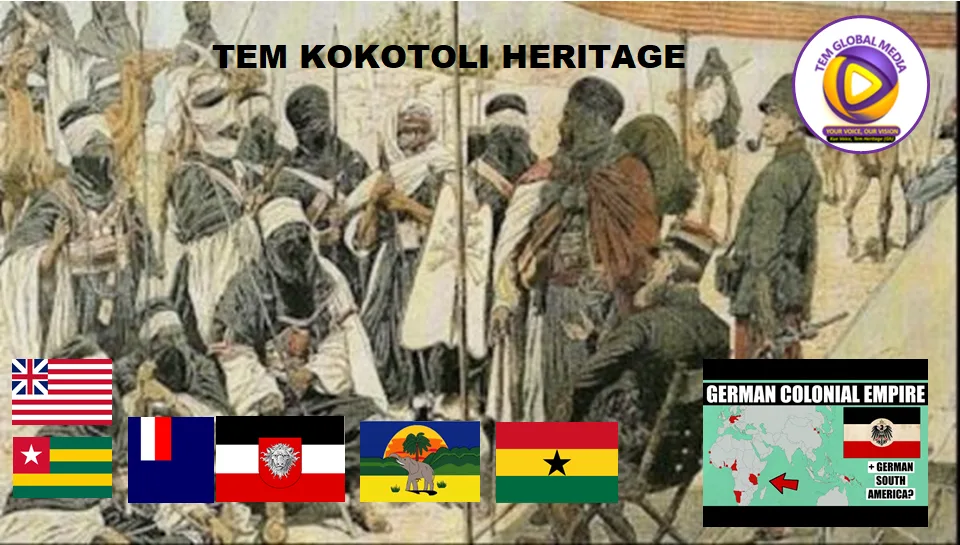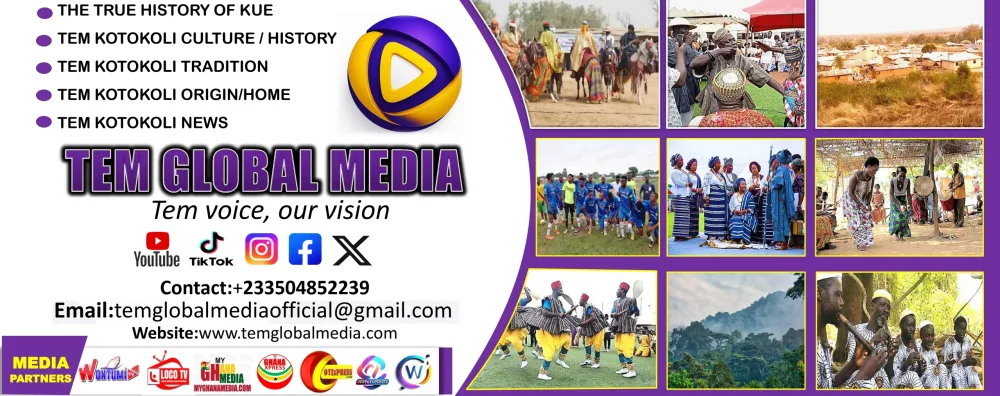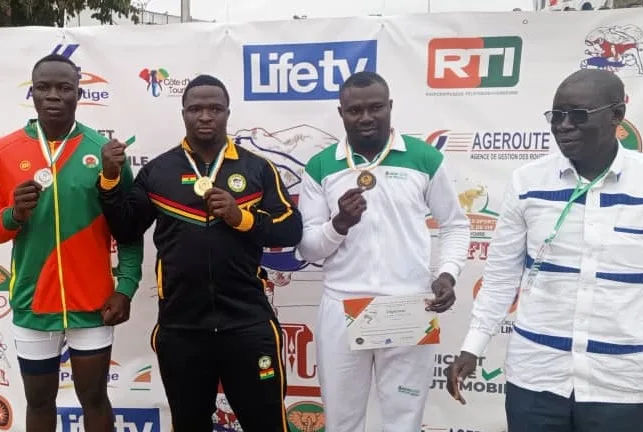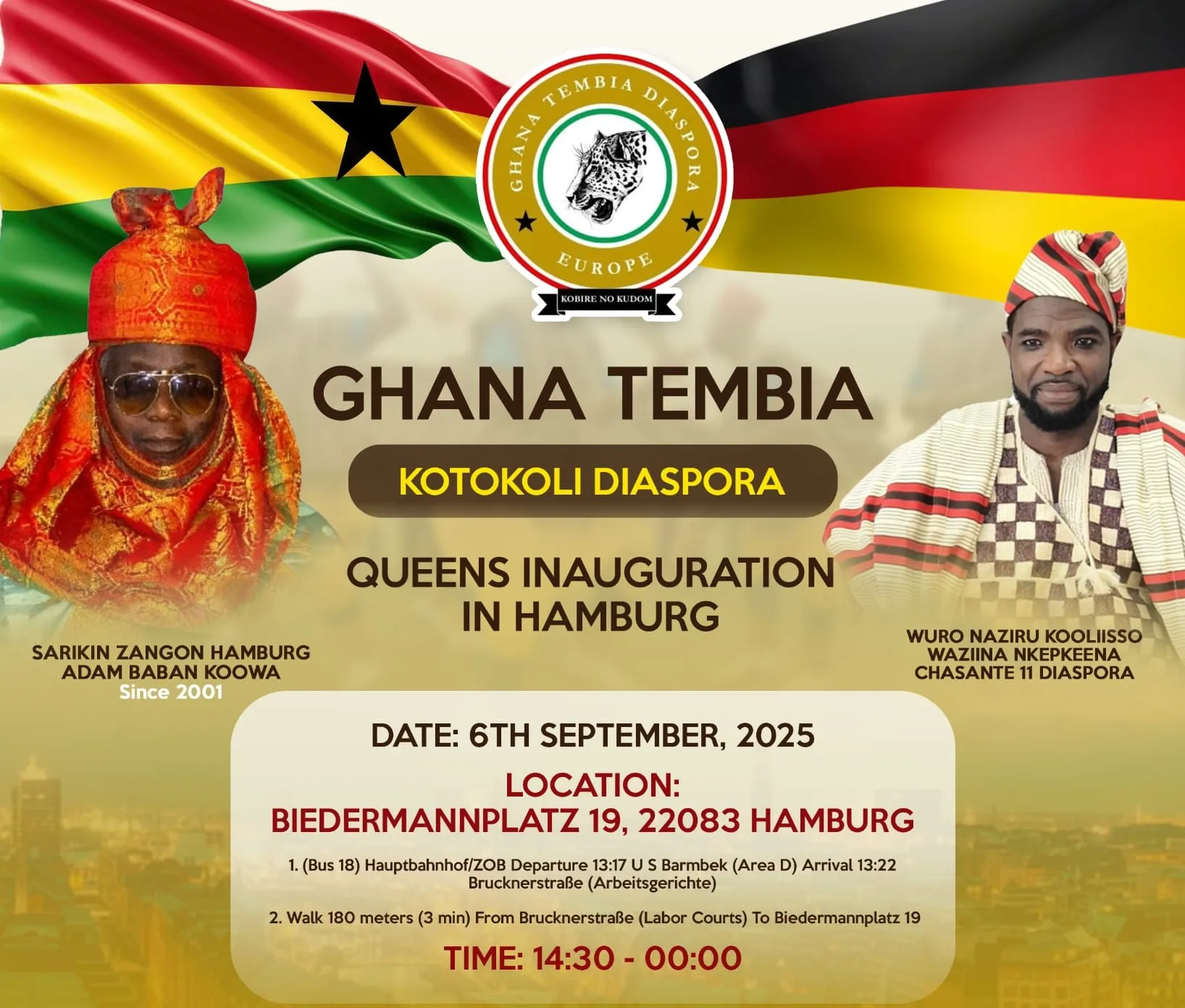The Tem Kotokoli People: Ancestry, Colonization, and Ghanaian Identity

1. The Tem Kotokoli People and Their Colonial History
The Tem Kotokoli people are a distinct West African ethnic group with a rich historical and cultural heritage. Today, they are found in parts of Ghana, Togo, Benin, and beyond. Central to their history is the town of Kue (Koue), located in what is now the Oti Region of Ghana. This document provides a detailed explanation of the Tem Kotokoli people’s identity, their ancestral lands, the colonial events that divided their territory, and how some of them became part of Ghana through a United Nations-organized plebiscite in 1956.
2. Ancestral Land and Pre-Colonial Settlement
Long before the arrival of European colonizers, the Tem Kotokoli people were already settled in a wide stretch of territory extending from present-day Kue (Koue) (in Ghana) to the eastern region of what is now Togo. This land, which they inhabited and governed, included rich plains, forests, and fertile valleys. The Tem Kotokoli had established traditional chieftaincy systems, spiritual practices, and communal life well before foreign interference. Their land was considered sacred and central to their identity.
3. German Colonization and the Division of Togoland
In 1884, Germany declared a protectorate over a large area of the Gulf of Guinea region, naming it German Togoland. This territory included the ancestral lands of the Tem Kotokoli. The German administration ruled the area without the consent of local populations. During this period, Kue (Koue) and other Tem Kotokoli territories became part of German Togoland. The Germans built administrative posts and attempted to integrate the area into their colonial economy.
However, Germany’s grip on the region loosened after World War I. In 1916, British and French forces took control of the territory. Then, in 1922, under the League of Nations mandate system, German Togoland was officially divided between two Allied powers:
- Eastern Togoland, including central and southern areas (present-day Togo), was placed under French administration and renamed French Togoland.
- Western Togoland, including Kue and surrounding areas, was placed under British administration and called British Togoland. It was administered separately from the British colony of the Gold Coast (modern-day Ghana).
4. The Status of British Togoland and the Role of the United Nations
Although under British administration, British Togoland remained a League of Nations mandate, and after World War II, it became a United Nations Trust Territory. The UN required that the will of the people in these territories be determined before any permanent union with another country.
As the Gold Coast (Ghana) moved toward independence, questions arose about the future of British Togoland. Some people advocated integration with the Gold Coast, while others, particularly some Ewe groups, preferred reunification with French Togoland (modern-day Togo), from which they had been separated by colonial boundaries.
5. The 1956 British Togoland Plebiscite
To resolve the issue, the United Nations Trusteeship Council organized a plebiscite (referendum) on 9 May 1956. The plebiscite was conducted with the cooperation of the United Kingdom, the administering power. UN observers ensured that the vote was conducted freely and fairly.
The central question of the vote was:
- Should British Togoland be integrated into the Gold Coast (which was on the verge of independence)?
- Or should it remain a separate territory (with possible future reunification with French Togoland)?
Results of the Vote:
- 58% voted in favor of joining the Gold Coast.
- 42% voted against.
This result meant that British Togoland would be integrated into Ghana upon its independence in March 1957.
6. The Involvement of the Tem Kotokoli People
The Tem Kotokoli people living in Kue and surrounding areas were part of this plebiscite. Their land had been under British administration since the partition of German Togoland in 1922. As residents of British Togoland, they voted in the plebiscite alongside other ethnic groups such as the Buem, Nchumuru, Likpe, Adele, Santrokofi, and some Ewe communities.
With the majority vote in favor of integration, Kue (Koue) officially became part of Ghana in 1957. Thus, the Tem Kotokoli of Kue (Koue) are recognized as indigenous Ghanaians — not immigrants or settlers, but original inhabitants whose land was absorbed into Ghana through internationally recognized processes.
7. Tribes That Voted in the Plebiscite
The plebiscite involved multiple ethnic groups across British Togoland, including:
- Tem Kotokoli
- Buem
- Likpe
- Adele
- Akyode
- Santrokofi
- Nchumuru
- Some Ewe communities, and many more
These groups were spread across districts like Kue (Koue), Krachi, Jasikan, Hohoe, and others.
9. Conclusion
The Tem Kotokoli people are a proud and historically rooted ethnic group whose ancestral land spanned present-day Ghana and Togo. Their inclusion in Ghana was not by migration but by historical circumstances shaped by German colonization in 1884, the British-French division of Togoland in 1922, and a UN-administered plebiscite in 1956.
Their participation in the 1956 plebiscite, their long-standing settlement in Kue, and the legal process of Ghana’s independence all affirm their rightful identity as indigenous Ghanaians.
Understanding this history is crucial for recognizing their contributions, rights, and place within the Ghanaian national fabric.



